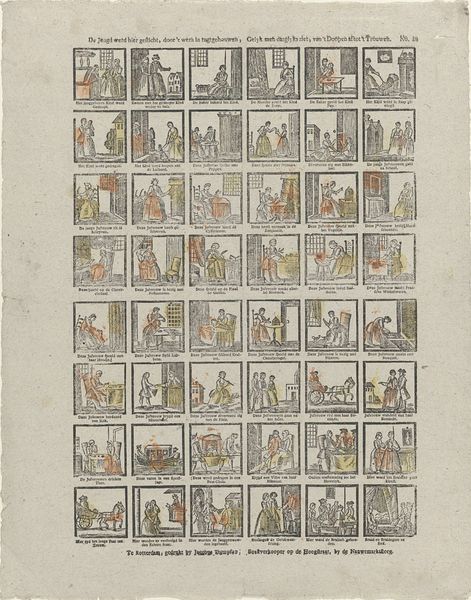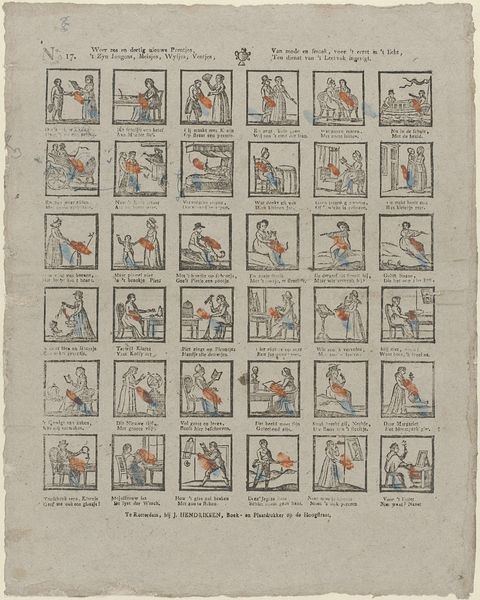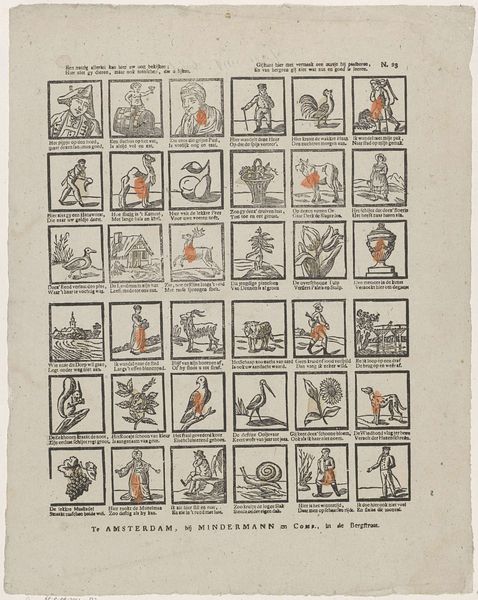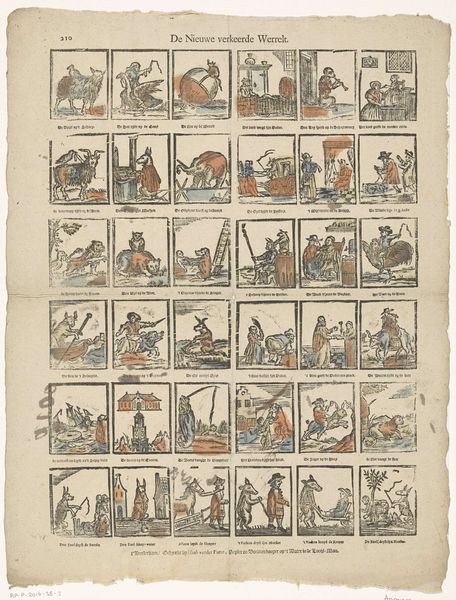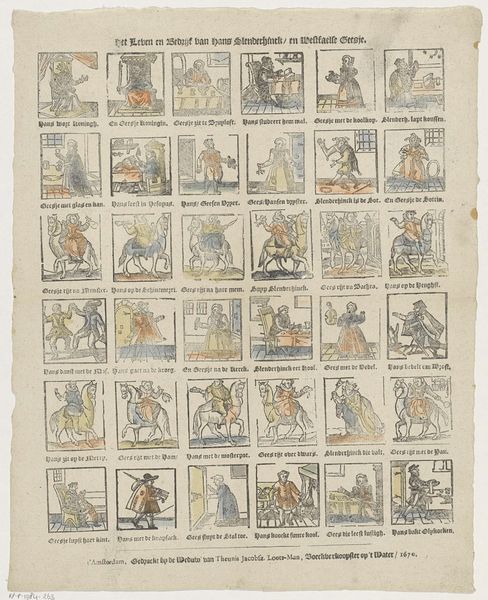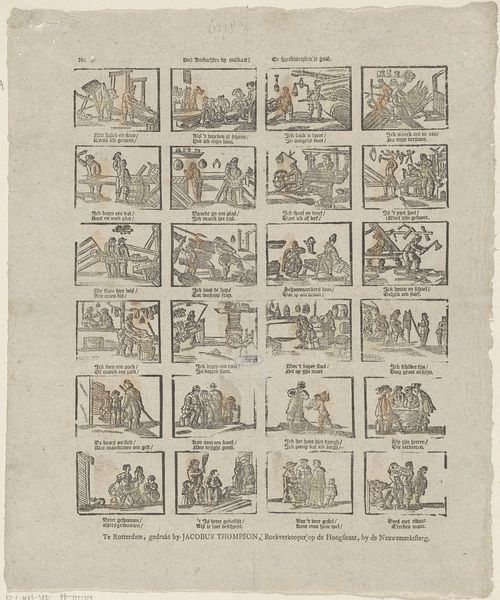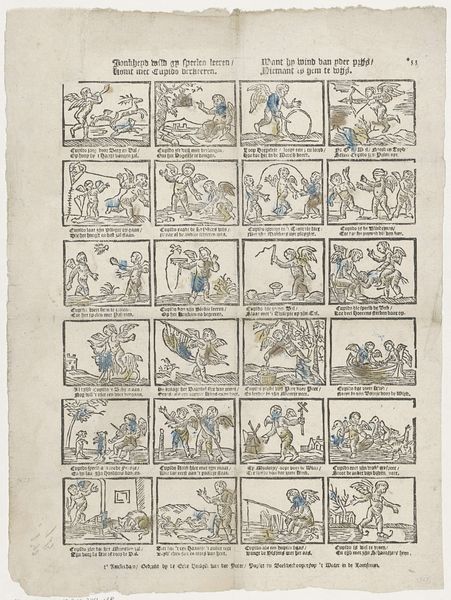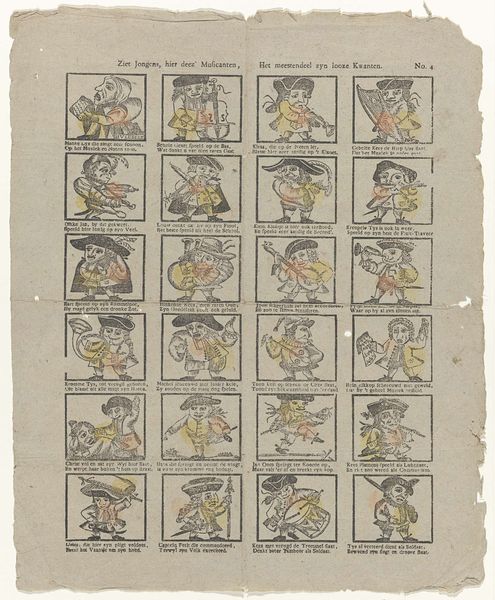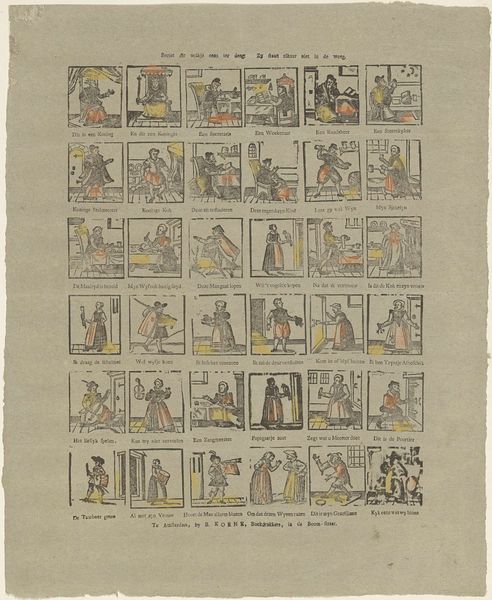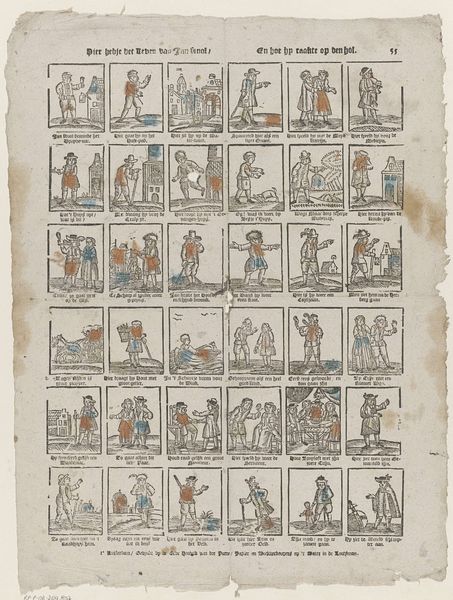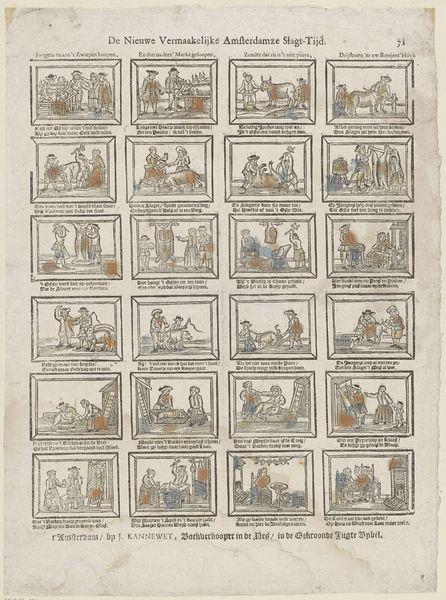
Het nieuwe en aardig leven / Waar toe Keesje hem heeft begeven (...) 1711 - 1723
0:00
0:00
jacobusconynenberg
Rijksmuseum
print, etching, engraving
#
aged paper
#
toned paper
#
narrative-art
#
dutch-golden-age
# print
#
etching
#
old engraving style
#
genre-painting
#
engraving
#
miniature
Dimensions: height 420 mm, width 318 mm
Copyright: Rijks Museum: Open Domain
Curator: Ah, look at this curious sheet of figures! This is an etching and engraving printed on toned paper sometime between 1711 and 1723. The full title is "Het nieuwe en aardig leven / Waar toe Keesje hem heeft begeven (...)" which translates to "The New and Pleasant Life / Where Keesje Has Devoted Himself (...)", made by Jacobus Conynenberg. Editor: Well, it immediately strikes me as wonderfully strange! It's like a visual encyclopedia of old-world charm with its tiny, quaint scenes. A bit naive, even, but thoroughly captivating. There is a playfulness there. Curator: Definitely. It feels almost like a comic strip from another era. Jacobus Conynenberg was a bookseller, so printing images like this was probably part of his wider business, a relatively inexpensive type of publication offering simple morals or amusement. Each vignette seems to tell its own story. Editor: Precisely, a story or snippet of a daily activity. But consider how carefully choreographed they are—note the gestures, the objects held, and the use of space. Each element tells you so much, and also so little. It prompts you to want to write an epic narrative about it. Also, notice how white male subjects are doing literally everything in this print. It reflects a society of a privileged class, blind to other classes and racial backgrounds. Curator: I agree. And there’s a slight disconnect between the clumsiness of the etching technique and the potential sophistication in their stories, or meanings. This almost makes the image very potent to engage with. As viewers, we almost need to do a labor to bring forth its full presence. Editor: The miniature scale is rather brilliant. So economical, so modest, so open and boundless! I suppose in a way, the "pleasant life" wasn't actually accessible to all, it served to distract many, while being consumed by so few. It really forces you to grapple with the disparities present in that era, and of course still in our own. Curator: Indeed, it is an almost unsettling window into the Dutch Golden Age through carefully arranged scenes printed by a tradesman! An amusing scene, for sure, but certainly embedded in its unique context and socio-economic climate. Thank you. Editor: Thank you. It reminds me that looking back can also cast a new light on where we stand now.
Comments
No comments
Be the first to comment and join the conversation on the ultimate creative platform.
